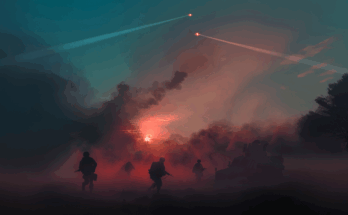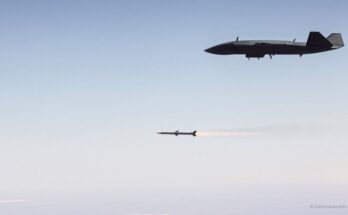by Derek Bisaccio, Military Markets Analyst, Forecast International.

during the “Defenders of Friendship 2016” Exercises
Source: Russian Ministry of Defense: http://mil.ru/
Citing a draft budget document released by business daily Kommersant, a number of Russian news outlets have reported that Russia is considering cutting close to a third of its defense expenditures for 2017.
Though not final, the document suggests that Russia might reduce defense expenditures by nearly 30 percent. It is likely that the Defense Ministry will fiercely oppose the moves; a Reuters report in February of this year cited a source as saying there was “mighty opposition” from the Defense Ministry to potential procurement cuts.[i]
The proposed defense cut comes as the country’s economy continues to struggle with low energy prices and foreign sanctions. In 2014, the global price of oil collapsed under downward pressure from a glut in supply.[ii] During the same year, the United States and European Union began implementing sanctions on Russia for its role in the crisis in Ukraine. These measures include asset freezes, visa bans, and prohibitions on imports from and investments in Crimea, which Russia annexed from Ukraine in March of that year.
These twin forces have damaged the Russian economy, which, while recovering, remains weak. Roughly 55 percent of all exports are energy-related products, according to data reported by the Central Bank of Russia, and revenues from the energy sector make up a large share of the national budget. Exports have fallen, as has the value of the national currency, the ruble.
Russia has thus far resisted making significant cuts to the defense budget. The ruble’s depreciation against the dollar has caused the defense budget to fall in dollar terms, but in terms of rubles, Moscow has continued to increase its defense budget, even as recently as this past year.
If the draft document reported by Kommersant is adopted, however, those increases of recent years may be blunted by a sizable cut to the budget. The defense budget may be cut by as much as one trillion rubles (around $15.7 billion) – about 27 percent of the budget.[iii] Defense expenditures as a share of both the national budget and gross domestic product will decline as a result, reversing the trend of the past few years of both metrics increasing year-on-year.
Russia’s defense modernization programs will be impacted by the proposed cuts. Particularly since being re-elected in 2012, President Vladimir Putin has emphasized modernizing the Russian military and re-equipping it with more advanced hardware. The State Armament Program envisions hundreds of billions of dollars being spent through 2020.[iv] But already some of the more costly projects have been downsized.
Russia has likely reduced the size its planned order for PAK FA fifth-generation fighter jets to 12 jets from a planned 52.[v] The fighters are due to begin entering serial production in 2017 or 2018. And the military might field only 70 to 100 T-14 main battle tanks by 2020,[vi] as opposed to a planned 2,300 tanks.
Particularly in the short term, the potential expenditure cut would further hurt the modernization drive. The cuts will slow the process of bringing more advanced systems into service, delaying key programs that are meant to provide Russia’s armed forces with hardware that can compete with advanced Western systems. Moscow may even jettison some of the loftier projects.
It is unclear what effect the cuts would have on Russia’s military deployments abroad, namely its combat operations in Syria. Though poised to escalate the situation in Aleppo with the deployment of new assets, Russia may over time be forced to scale back some of its missions in order to trim the costs of the operation. Data compiled by IHS Jane’s for The Moscow Times in the month after air strikes began last year indicates that daily costs for running the operation range between $3 and $4 million,[vii] though the outlays may have shifted as the operation expanded to include naval assets and strategic bombers.
Russia remains committed to defending Syrian President Bashar al-Assad. Because Russia has a keen interest in preventing the collapse of Assad, a tightening budget outlook will not result in Moscow abandoning its Syria mission. Even as the government considers next year’s budget, Russia’s only aircraft carrier is deployed in the Mediterranean Sea for the Syrian campaign and additional naval vessels, such as the Admiral Grigorovich, are being sent.[viii] Russia recently deployed the S-300V4 air defense system to complement the advanced S-400 already in the country.
Broadly speaking, the proposed defense cuts, while painful for the military, will not entirely cripple Russia’s modernization drive or the Russian defense industry, provided that the economy does not encounter further challenges and recovery proceeds. Russia’s defense expenditures will remain among the top 10 in the world and will start to see increases as the economy improves. Many of Russia’s advanced programs will continue, but with smaller orders from the Ministry of Defense.
The defense industry, meanwhile, continues to secure export orders around the world. Russian officials report that the Syria operation has boosted interest in Russian military products, particularly aircraft. The annual value of exports in recent years has remained at around $15 billion – nearly half of which comes from aircraft sales[ix] – and Rosoboronexport’s CEO notes that the state arms exporter has an export portfolio of over $45 billion.[x]
But even so, cuts to the defense budget come at a time when Russia is seeking to raise its profile on the world stage, both inside and outside the former Soviet space. A reduction in defense expenditures, even one less than the nearly 30 percent cut that has been proposed, will certainly have a negative impact on Russia’s power projection for the coming years – and even more so should cuts continue past the 2017 budget.
The Forecast International International Military Markets series examines the military capabilities, equipment requirements, and force structures inventories of 140 countries, with corresponding coverage of the political and economic trends shaping the defense market outlook for individual countries and regions.
 [i] Margarita Papchenkova, Lidia Kelly and Darya Korsunskayak, “Russia could cut defense procurement spending: sources,” Reuters, February 19, 2016. http://www.reuters.com/article/us-russia-crisis-military-spending-idUSKCN0VS0RR
[i] Margarita Papchenkova, Lidia Kelly and Darya Korsunskayak, “Russia could cut defense procurement spending: sources,” Reuters, February 19, 2016. http://www.reuters.com/article/us-russia-crisis-military-spending-idUSKCN0VS0RR
[ii] Russel Gold, “How Crude Oil’s Global Collapse Unfolded,” The Wall Street Journal, December 12, 2014. http://www.wsj.com/articles/tracing-oil-price-plunge-back-to-texas-1418404579
[iii] Alexei Lossan, “Russia slashes military spending as revenues shrink,” RBTH, November 1, 2016. http://rbth.com/defence/2016/11/01/russia-slashes-military-spending-as-revenues-shrink_644019
[iv] Tass News Agency, “Russia to spend $600 billion on state armaments program by 2020,” July 3, 2014. http://tass.com/russia/738863
[v] Ivan Safronov, “Russian Defense Ministry to slash orders for new PAK FA aircraft,” RBTH, April 7, 2015. http://rbth.com/defence/2015/04/07/russian_defense_ministry_to_slash_orders_for_new_pak_fa_aircraft_45033.html
[vi] Franz-Stefan Gady, “Russia’s Military to Receive 100 New T-14 Armata Battle Tanks,” The Diplomat, September 24, 2016. http://thediplomat.com/2016/09/russias-military-to-receive-100-new-t-14-armata-battle-tanks/
[vii] Peter Hobson, “Calculating the Cost of Russia’s War in Syria,” The Moscow Times, October 20, 2015. http://themoscowtimes.com/articles/calculating-the-cost-of-russias-war-in-syria-50382
[viii] Sputnik International, “Hardcore Russian Team: Kalibr-Armed Frigate to Join Naval Group Near Syria,” November 3, 2016. http://sputniknews.com/military/201611031047024502-admiral-grigorivich-syria-russia/
[ix] Tass News Agency, “Aircraft hardware comprises almost half of Russia’s arms exports – official,” November 2, 2016. http://tass.com/defense/910163
[x] Sputnik International, “Russian Portfolio of Arms Orders Tops $45bln,” November 3, 2016. http://sputniknews.com/military/201611031047022152-russia-arms-export-portfolio/
For 50 years, Forecast International intelligence reports have been the aerospace and defense industry standard for accurate research, analysis, and projections. Our experienced analysts compile, evaluate, and present accurate data for decision makers. FI's market research reports offer concise analysis of individual programs and identify market opportunities. Each report includes a program overview, detailed statistics, recent developments and a competitive analysis, culminating in production forecasts spanning 10 or 15 years. Let our market intelligence reports be a key part of reducing uncertainties and mastering your specific market and its growth potential. Find out more at www.forecastinternational.com


